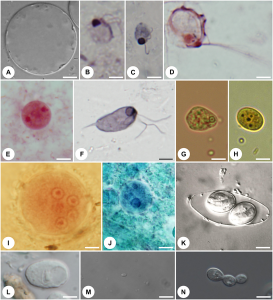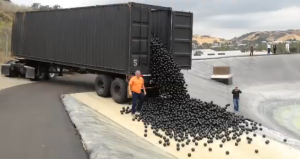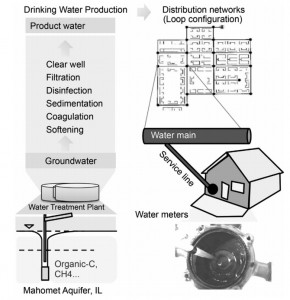There is an interesting paper from Julius LukeÅ¡ et al. in PLOS Pathogens that is worth looking at for anyone who works on microbial diversity: PLOS Pathogens: Are Human Intestinal Eukaryotes Beneficial or Commensals? They basically argue (reasonably I think) that the roles of microbial eukaryotes in the human gut have been excessively interpreted as parasitic and that …
Science papers about mosquitoes in urban parks and purses as fomites, and popular press articles about dirty menus in restaurants and filtering bacteria with book pages. Here is a good song to match the latter two: Turn the Page by Metallica. Diversity and abundance of mosquitoes (Diptera:Culicidae) in an urban park: Larval habitats and temporal variation – Antônio …
Social media has a lot of utilities, but who would have thought it could be useful in tracking down food illness sources? This article from The Washington Post discusses how Twitter and Yelp have been successfully used by health agencies in New York and Chicago to preempt restaurant inspections. Although this is by no means a miracle …
A recent New York Times article by Katie Rogers talks about an odd solution to California’s dwindling water supply. LA county is using small black balls that float on the surface of reservoir water to block UV and heat. This prevents both evaporation and algae growth from occurring. With California’s drought persistently eating away at our …
Here is your song to go with this post: Something in the water by Carrie Underwood. When we drink tap water, we usually don’t really think about the bacteria that might be in there. The quality of drinking water in the US is regulated by Environmental Protection Agency (EPA) and monitored by regularly testing the water …
Here are the new papers on microbes in the Built Environment I found this week, about salt-loving bacteria colonizing old houses, viruses in swimming pools, sewer systems, urban water and soils, and microbiota in urban mosquitos. Here is a good ol’ country song to match this post: This Old House by Stuart Hamblen. Paid Access, review: Halophilic microbial communities in deteriorated buildings – …
Here is a recent article about a built environment that hasn’t been characterized before for bacterial diversity: a meat processing plant where sausages are produced. The authors sequenced the V1-V3 area of the 16S rRNA gene to characterize cold tolerant or psychrotrophic bacteria in a refrigerated meat processing plant. Psychrotolerant bacteria are bacteria that are capable of surviving in …
This article on the website of Michigan Radio had an intriguing title. Detective work traces bacteria in Michigan rivers back to leaky septic tanks – Rebecca Williams – Michigan Radio This is a nice story illustrating how the detection of marker bacteria can be used to track contamination of rivers and other environments with fecal matter, …
So – I keep getting asked about this. I am looking for how people are doing DNA extractions from 1000s of samples. Some questions 1. What are the cheapest service providers out there for doing DNA extractions from 1000s of samples? 2. What would be the best way to do this oneself? That is, if you were …
Well this is certainly very interesting and filled with all sorts of topics of relevance to microbiology of the built environment: Source: Did a moldy building kill 4 New Orleans college professors? | NOLA.com. I am by no means a mold expert so I am not sure I can comment much on the …



